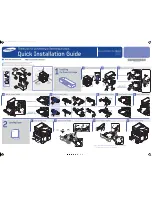
UBI EasyCoder 501 – Service Manual
114
17.3
Circuits and Straps, cont'd.
17. CPU BOARD, cont'd.
Continued!
IC-200 RS 232C Driver Circuit
This IC-MC145407 circuit supports the RS 232C interface on
"uart1:" by transforming TTL-signals into
±
10V V11-signals and
vice versa.
IC-205 – 206 Optocouplers (optional)
Two IC-6N139 optocouplers must be fitted when a 20 mA current
loop interface is used on "uart1:".
IC-207 RS 422 Circuit
This IC-DS8921 circuit must be fitted when an RS 422 interface is
used on "uart1:".
IC-402 HPC Slave Processor
The HPC-46083-DEP/V30 functions as a slave processor to the
main processor.
Note that the HPC circuit for the CPU boards 1-040700-29 and
1-040700-30 differs from that of CPU board 1-040700-28 in
having a higher clock frequency.
The HPC is a masked programmed controller, which means that it
has a program of its own burnt into an internal ROM memory. This
circuit controls machine-related functions, like:
• Thermal printheads. The slave processor generates the strobe
time signals which continuously control the energy supplied to
each thermal element of the printhead. Thus, each element
receives at all times the exact amount of electrical energy in
order to develop the necessary thermal energy needed to pro-
duce a dot on the paper, without becoming overheated.
• Stepper motors. The slave processor produces the “step pat-
tern” signals which control the direction and level for the current
in the motor windings, with an exact timing between steps.
• Interfaces. The CPU board's built-in communication port "uart1:"
is controlled by the slave processor that generates the necessary
protocol signals. The slave also sends an interrupt signal to its
master when it has stored incoming characters in its internal
RAM memory.
















































